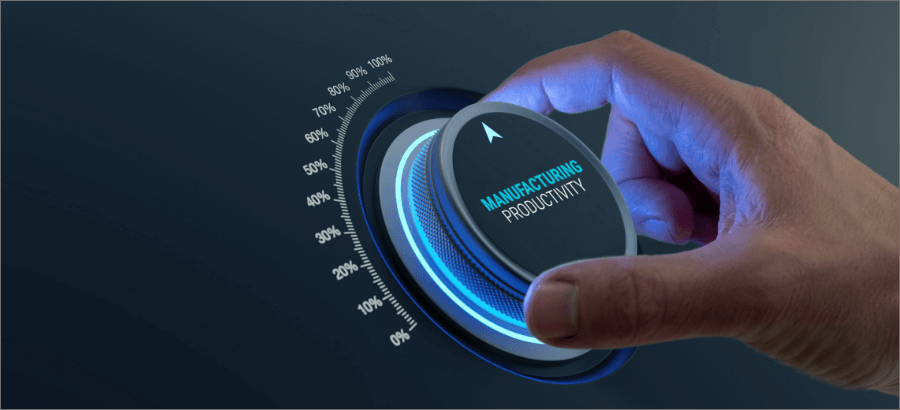Manufacturing Operations Management (MOM) together with an ERP system allows manufacturers to collect the data, visualize and analyze it, and make decisions. Manufacturers know that the world has changed, They don’t have long production runs anymore, they know they have to ensure the quality and consistency of products, and they are under pressure to reduce costs and increase operational efficiency. They also know that this requires optimizing their manufacturing plants. But to understand how to do that requires information, and therefore the question is how to get accurate data to check that the plant, and the people on the shop floor, are performing?
The importance of digital manufacturing
Digital manufacturing means adopting technologies to address problems, identify opportunities, and provide a better customer experience. It involves using data to uncover and unlock value in different areas of a factory, such as:
- reducing inventory holding costs;
- increasing labor productivity;
- reducing machine downtime;
- increasing manufacturing throughput.
To paraphrase another saying – data is vanity, metrics are sanity. Collecting data is useful but metrics allow an organization to know what to care about. A very useful metric in manufacturing is Overall Equipment Effectiveness (OEE).
What is OEE?
OEE takes into account equipment availability, performance, and quality. It can be used to measure a specific piece of production equipment or can be applied across the entire production line. Using OEE provides insights on how to adjust and streamline manufacturing operations to produce high-quality products, at a low cost, within the constraints of given lead times. A majority of manufacturers use OEE to measure, analyze and report performance on the shop floor.
Using OEE has additional benefits when it is automated and tracked in real-time, which is possible with machinery in factories that have programmable controllers to enable real-time data to be collected.
Combining the data with a MOM solution can provide the information that manufacturers need.
What is Manufacturing Operations Management (MOM)?
MOM is a set of software tools for viewing end-to-end manufacturing processes in order to optimize efficiency. Companies are finding it a useful solution to improve control across the shop floor.
Value stream mapping (VSM) is a methodology that can help kick off a MOM project. VSM can highlight problems in the manufacturing process, and where improvements may have the biggest benefit. In the past, some VSM projects were unsuccessful because they were seen as burdensome and irrelevant, and shop floor staff weren’t involved in how VSM was applied. In other words, VSM was an exercise, not part of a plan for improvement with a deployment strategy. With MOM, companies have a way to implement that plan with the data to ensure that metrics can monitor the progress of plant improvements.
Applying a methodology like VSM avoids a technology-first rollout where the MOM solution is deployed without a clear link to real opportunities, business challenges, or capability requirements, and helps to get buy-in from the people who have to make the deployment work.
How Manufacturing Operations Management (MOM) helps manufacturers
Initially, a MOM system can be used to collect machine data and display it in real-time on a dashboard. This provides alerts on machines that are getting close to maintenance time. Using MOM, maintenance can be scheduled as a job which avoids the old clashes that production schedulers used to have when the maintenance team took a machine offline that was scheduled for a production job.
A MOM system provides the insights that expose the processes that don’t add value. It provides the critical ability to see what people are doing and how long jobs are actually taking versus how long people planned for the jobs to take. It also allows the production staff to see how they perform and what non-value activities are happening at their level.
A MOM system is not just a management system. Often, production team members have the best understanding of how processes work. The MOM system should also enable the delegation of decision-making to the lowest level on the shop floor, giving the production team clarity on what they need to be doing and how they are going against their targets. With this information, they can then decide what options they need to take to improve.
Why MOM needs an ERP
In a world where collaboration between different business functions is becoming increasingly important, operating a MOM system in isolation ignores the inputs that plant operations and scheduling require to support the business. That is why a MOM system should be an integral part of an ERP system that manufacturers use.
Without the ERP system, the MOM application does not have the information about delivery dates of materials or components from suppliers that need to be factored into the plant schedule. On the demand side, the ERP system manages the material requirements plan which addresses the questions of what is needed, how much, and when. This is critical information for the master production schedule that the MOM uses. The manufacturing jobs that a MOM system manages are dependent on the Bill of Materials that defines what items are needed in a product and the steps needed to make that product. Consequently, a MOM solution should be seen as a natural extension of an ERP system that a business uses.
MOM and digital manufacturing
MOM systems are going to play a foundational role in digital manufacturing. Organizations will need to invest in MOM capabilities to remain competitive in the new manufacturing era of Industry 4.0. Using a MOM system, manufacturers have full tracking and traceability of an order to ensure the quality of a product. Manufacturers with a MOM system will be able to reap the future benefits of the Industrial Internet of Things (IIOT), improve efficiency and visibility of factory operations, and make better decisions based on detailed, real-time data.
But what if machinery in the manufacturing plant is older than 10 or 15 years and does not have the inbuilt components to send data to a MOM? The good news is that the machinery can still be connected, and not a great expense either.
The next part of this series will explain how to use OEE and MOM with older machinery.








1 thought on “How OEE and MOM can be used to streamline manufacturing”